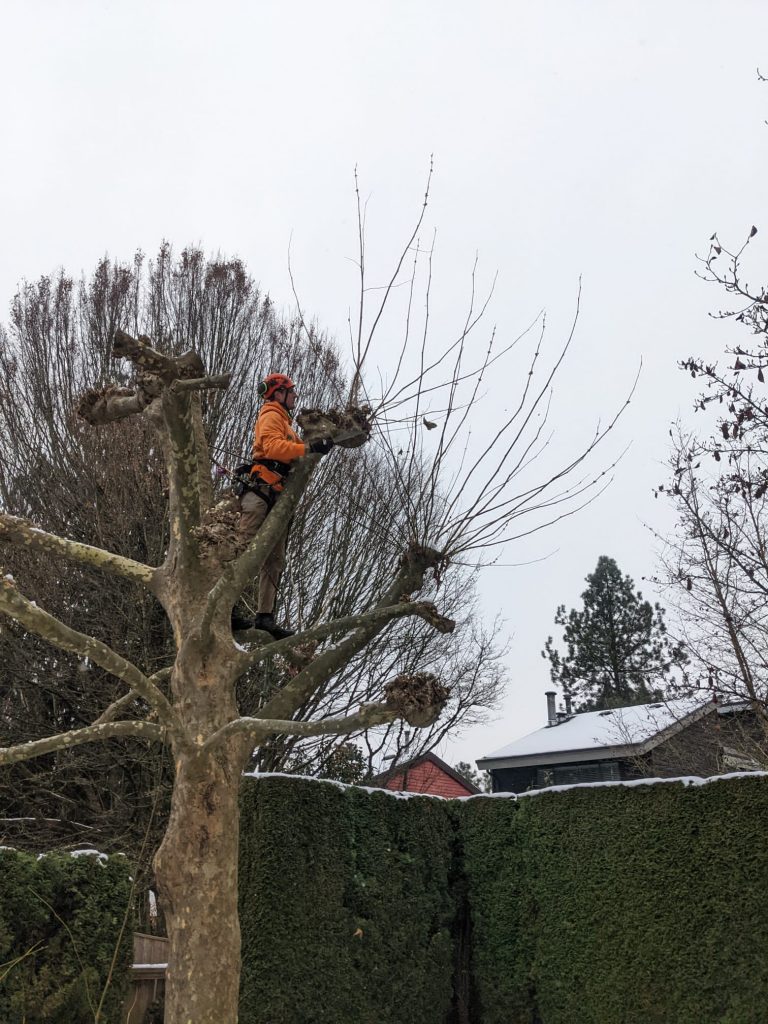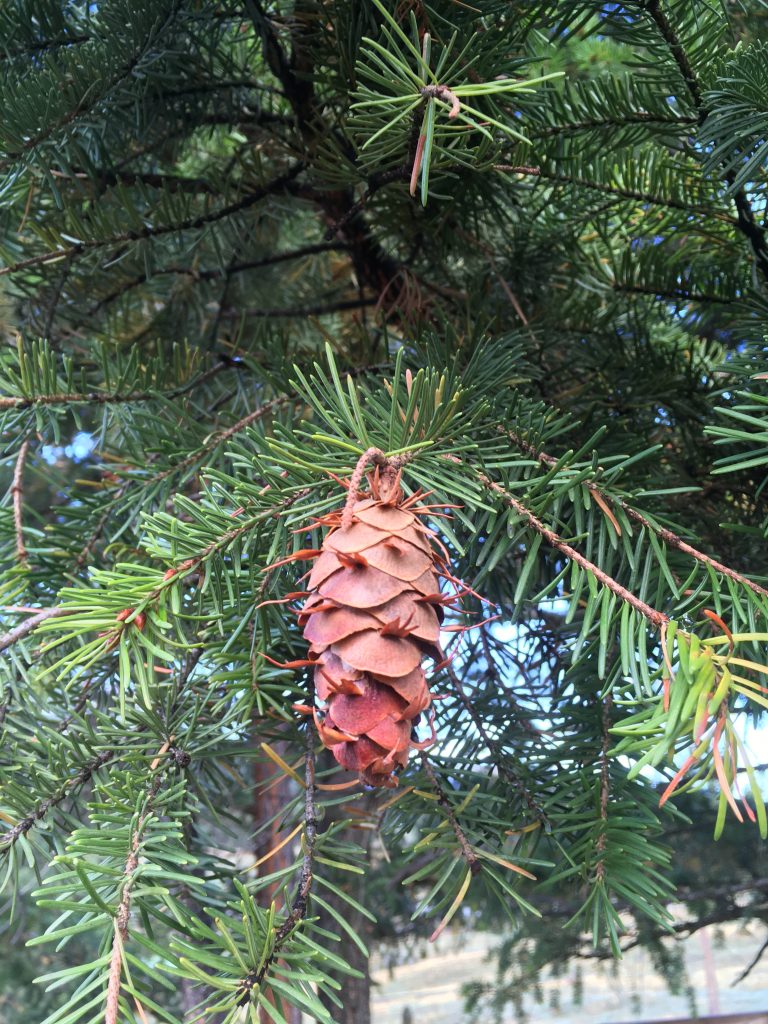Why pollarding?
There are three mature London plane (Platanus x acerifolia) trees at a multi-family site (called strata in British Columbia) I know. One of those trees is fairly close to the building so it’s pollarded annually to keep it from getting too big. When people lose their views, they get upset; when gutters get full of leaves, it costs money to clean them up. It’s much easier to pollard the trees every winter.
Pollarding means removing all of the branches and letting the tree resprout. My 2018 blog post on this topic mentioned my distaste for the look of pollarded trees. I naively thought people pollarded trees because they couldn’t prune them properly. How wrong I was.
Vas was wrong
Then, in 2019, William Bryant Logan released his amazing book “Sprout lands: Tending the endless gift of trees“. It turns out that our civilization was able to thrive thanks to pollarding.
Done correctly, the pollarded wood was used for ships, baskets, wood to heat homes, and food for animals. Pruned trees resprouted new wood and kept on giving, thus the endless gift of trees book subtitle.
I had no idea.
London planes
Now back to our London planes. The three specimens are mature but not as mature as the trees on the boulevard. One, you will recall, is close to the building and the other two are not too far from a pool.
Pollarding involves removing all branches, leaving the funny-looking “knuckles”. It doesn’t look great after it’s done but the tree will never get bigger than this. Assuming you pollard it every year.
The green waste is hauled away but ages ago, it would have been used for firewood or to make baskets.

If your tree is mature, hire an arborist. If it’s smaller, you can easily do it yourself. Just pollard at a height you like. But, always, always, use sharp hand saws and proper safety gear. Tree work can be dangerous.

I must admit that in summer the trees look totally fine. You can’t really see the ugly “knuckles” and we know that the tree will stay roughly this size.
Now I just wish we had some use for the wood we remove.






















